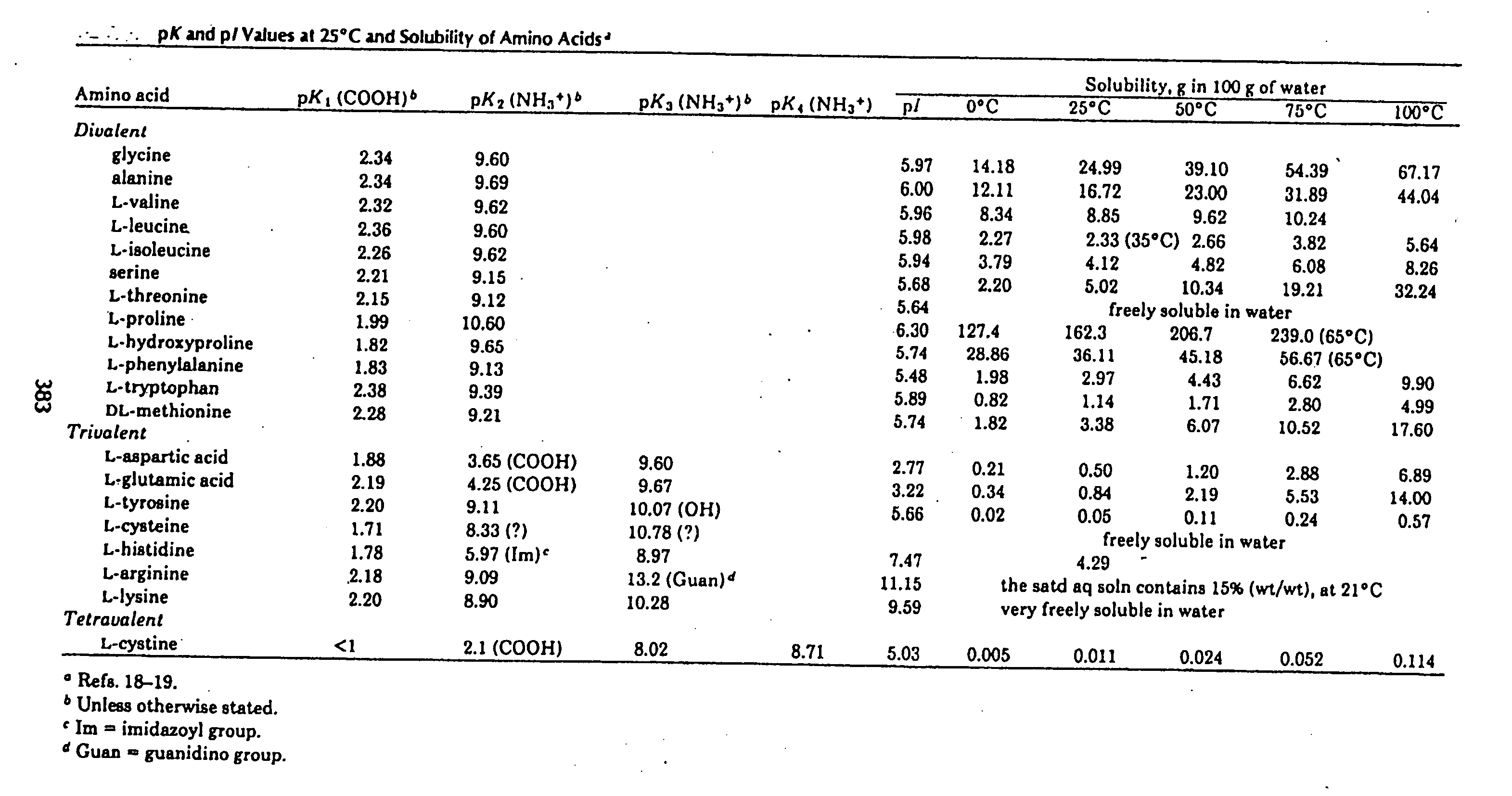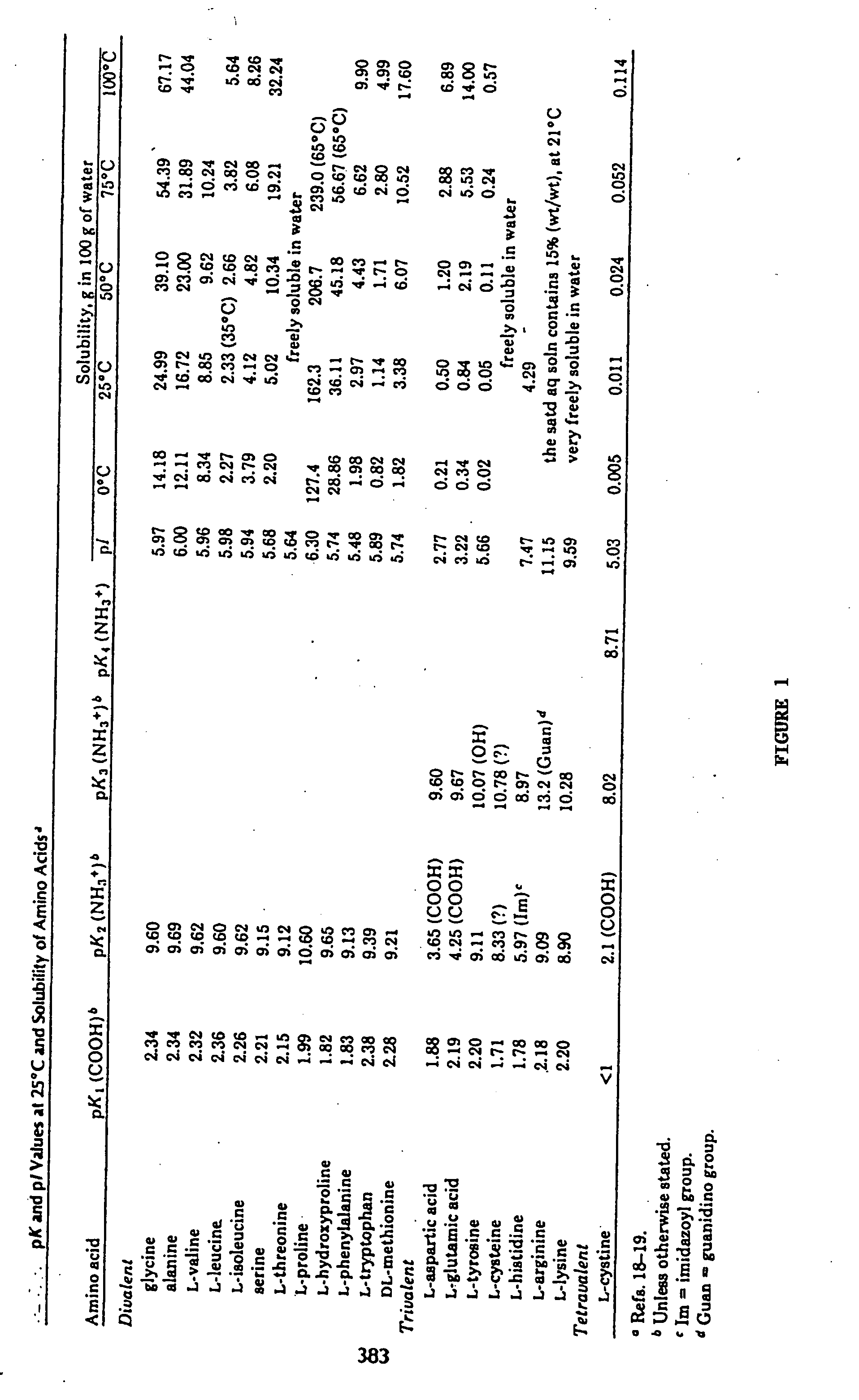Methionine recovery processes
a methionine and recovery process technology, applied in biochemistry apparatus and processes, peptide/protein ingredients, biocide, etc., can solve the problem of loss of significant amounts of insoluble material, and achieve the effect of increasing the solubility of an l-methionine preparation
- Summary
- Abstract
- Description
- Claims
- Application Information
AI Technical Summary
Benefits of technology
Problems solved by technology
Method used
Image
Examples
example 1
Culturing Methionine Producing Microorganisms in Fermentation Medium
[0195] Methionine producing bacteria Corynebacterium glutamicum—ATCC21608, obtained from American Type Culture Collection, was aseptically added to 5 mL of nutrient broth (DIFCO) and allowed to grow for 24 hours at 30° C. under vigorous shaking. After the 24 hour incubation, the culture was used to seed 100 ml of nutrient broth (DIFCO) and allowed to grow for an additional 18 hours at 30° C. under vigorous shaking. Aliquots of the bacteria were then transferred to nutrient agar plates and the plates placed in an incubator for 24 hours. The plates were examined for growth and were refrigerated until further use.
[0196] Colonies from agar plates were aseptically transferred into 250 mL flasks containing 30 ml of nutrient broth (DIFCO) and allowed to grow at 30° C. After 24 hours of growth, these microorganisms were used as seed culture in a 3-L fermenter containing growth media consisting of 50 g / L glucose, 50 g / L so...
example 2
Increased Recovery of L-Methionine at Basic pH
[0197] The fermentation broth produced by growing Corynebacterium glutamicum—ATCC 21608, as discussed in Example 1, was supplemented with L-methionine to give a final methionine concentration of 75.2 g / L in the slurry. The resulting slurry consists of soluble and insoluble L-methionine, microbial cells and constituents of fermentation media. The pH of the slurry was measured to be 5.54. A well-mixed sample of this slurry was drawn, and solids removed from the sample by centrifugation followed by filtration. The concentration of methionine in the filtrate of the slurry was determined by HPLC to be 38 g / L, giving a concentration of soluble methionine in a typical fermentation broth.
[0198] To the remaining slurry, a 50% solution of sodium hydroxide (NaOH) was added at a level corresponding to 1 equivalent weight of L-methionine, raising its pH to 9.36. From a well-mixed sample of this slurry, solids were removed as before by centrifugatio...
example 3
Increased Recovery of L-Methionine at Basic pH
[0200] Methionine was added to the fermentation broth at a concentration of 56 g / L. In addition to soluble methionine, the slurry had insoluble methionine, microbial cells and components of fermentation media. 50% NaOH was added to the slurry at a concentration equal to 0.5 eq. weight of methionine. The pH of the slurry after addition of NaOH was 8.92 and the soluble methionine concentration in it was 58 g / L. Additional NaOH was added to the slurry to 1 eq weight of L-methionine, raising the pH of the slurry to 9.38. A sample of the slurry was removed and filtered as previously described. The concentration of methionine in the filtrate was found to be 56 g / L. No additional methionine was solubilized by increasing the concentration of NaOH to 1.5, 2 and 2.5 eq wt of methionine. The pH of the slurry was 9.82, 10.47 and 12.23 after addition of NaOH of 1.5, 2 and 2.5 eq wt of methionine, respectively.
PUM
| Property | Measurement | Unit |
|---|---|---|
| temperature | aaaaa | aaaaa |
| temperature | aaaaa | aaaaa |
| solubility | aaaaa | aaaaa |
Abstract
Description
Claims
Application Information
 Login to View More
Login to View More - R&D
- Intellectual Property
- Life Sciences
- Materials
- Tech Scout
- Unparalleled Data Quality
- Higher Quality Content
- 60% Fewer Hallucinations
Browse by: Latest US Patents, China's latest patents, Technical Efficacy Thesaurus, Application Domain, Technology Topic, Popular Technical Reports.
© 2025 PatSnap. All rights reserved.Legal|Privacy policy|Modern Slavery Act Transparency Statement|Sitemap|About US| Contact US: help@patsnap.com


